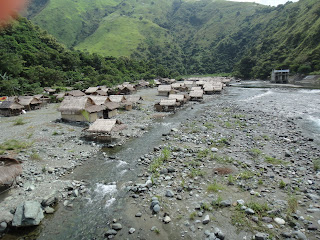A voice coming out from the four corners of a laboratory, expressing thoughts and ideas, personal experiences, news, and other things inside and outside of the Clinical Laboratory. Also, a collection of events and lessons regarding Malaria Microscopy and Quality Assurance in the Philippines.
Photos: 2012 Malaria Microscopy On-site Supervisory Visit in Central Luzon
Guided by the Malaria Program, microscopy services in the Rural Health Units (RHUs) and hospitals have been strengthened. Barangay Malaria Microscopy Centers (BMMCs) were also established even in remote malarious areas to provide immediate microscopy services.
 Microscopy services are provided by existing microscopy centers comprising of the RHUs, hospitals, laboratory facilities and BMMCs. These are manned by microscopists who could either be a medical technologist, a laboratory technician, other health staff or community volunteer worker who underwent special training on malaria diagnosis.
Microscopy services are provided by existing microscopy centers comprising of the RHUs, hospitals, laboratory facilities and BMMCs. These are manned by microscopists who could either be a medical technologist, a laboratory technician, other health staff or community volunteer worker who underwent special training on malaria diagnosis.
Implementation of quality assurance system is in place to ensure high quality microscopy services at various levels of health care. Part of the QAS is the assessment of microscopy services in health facilities. This is done through a validation of blood films, on-site supervision, feedback and remedial interventions. The purpose is not fault finding but rather to further enhance the skills of the microscopists, and help improve the support system for delivering microscopy services such as checking functionality of microscope, adequacy of laboratory reagents/supplies, recording system, and others.
On-site supervision is an opportunity for both the microscopist and validator (QAS supervisor) to directly interact and discuss blood film cross checking. It also allows the assessment of the working conditions of the laboratory units and support systems in place (e.g. recording, etc) and helps institute corrective measures, as needed.
Check out photos of this year's on-site supervisory visit:
A Visit to the Malaria Microscopy Center of Gabaldon
The malaria microscopy center of Gabaldon, Nueva Ejica is based in the Rural Health Unit. The laboratory is manned by Ms. Helen Grace A. Parungao who successfully finished the basic malaria microscopy training on 2005.
A faster route to get there is via Concepcion, Tarlac. Be sure to stop by Eva's Grill for your bladder break and fill your stomach with their satisfying "lutong bahay" meals. You might wanna try their "inihaw na hito" and "pinapaitan" for your soup.
Getting there will take around two hours of travel. Upon reaching its vicinity you will enjoy the green scenery along the way. The mountain and river views will definitely make your ride a joyful one.
Beside the RHU is the newly constructed birthing station. The building of the facility was made possible through the Department of Health to better serve the people of Gabaldon.
 |
| Ms. Jo Pascua and Ms. Helen Parungao |
Common in this area are the wind mills for water supply. An environmental friendly way of conserving energy in pumping water from a deep well instead of using an electric or gas powered motor.
On your way home, you can buy garden stones here for a very low price. Usually, three sacks will cost a hundred pesos. But you can always bargain for a discount or bonus if you will buy more sacks.
Subscribe to:
Posts (Atom)
Followers
Running A Web Design Business
You can run your own web design business from home, from a cafe or from a beach, all you need is a computer and an internet connection.



















































